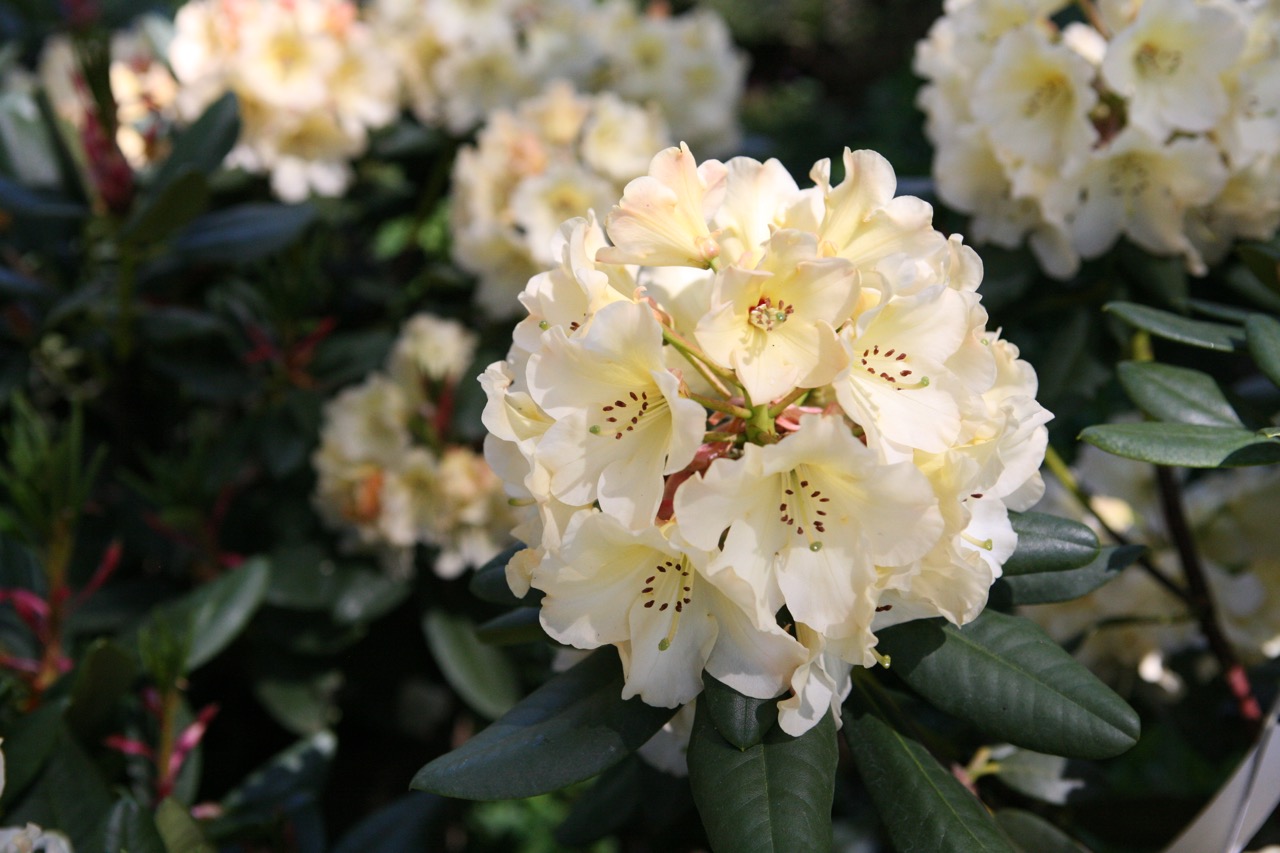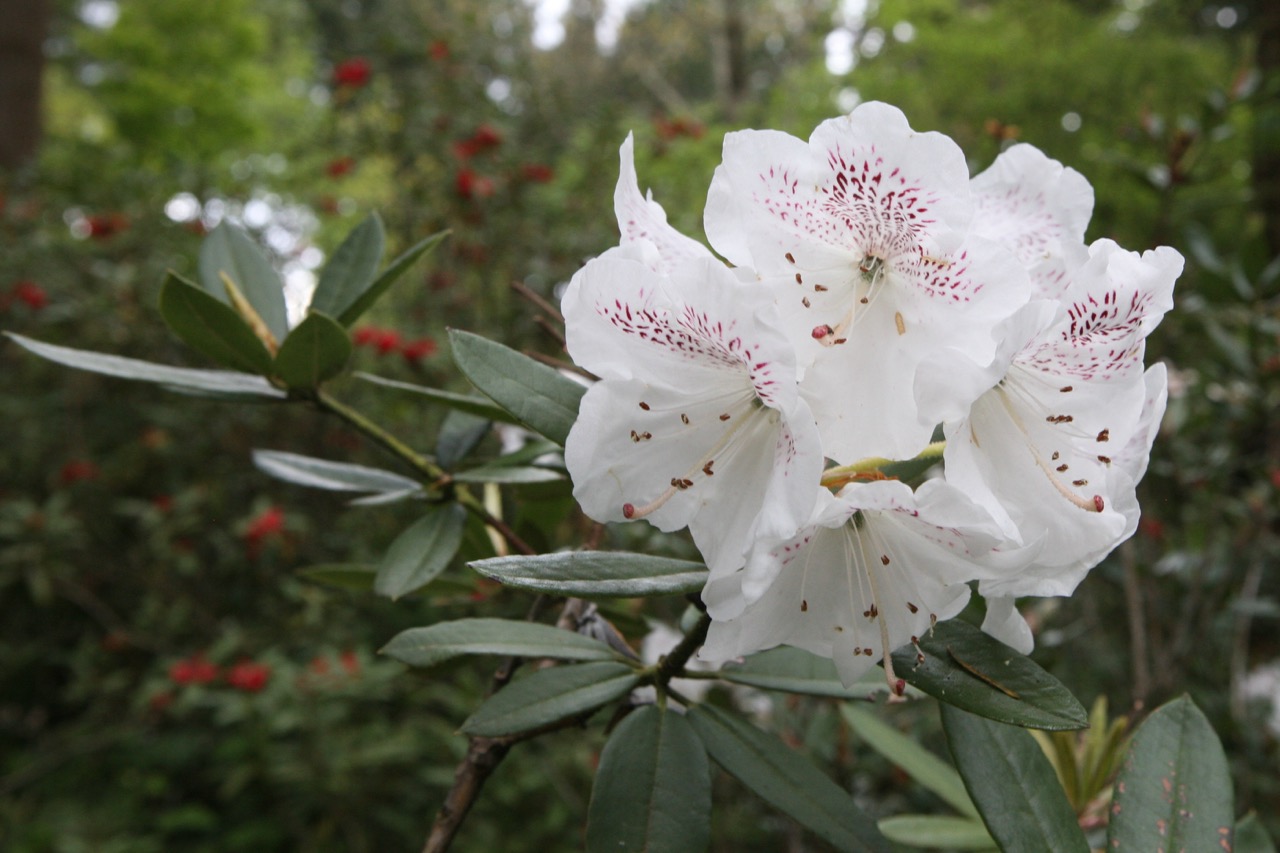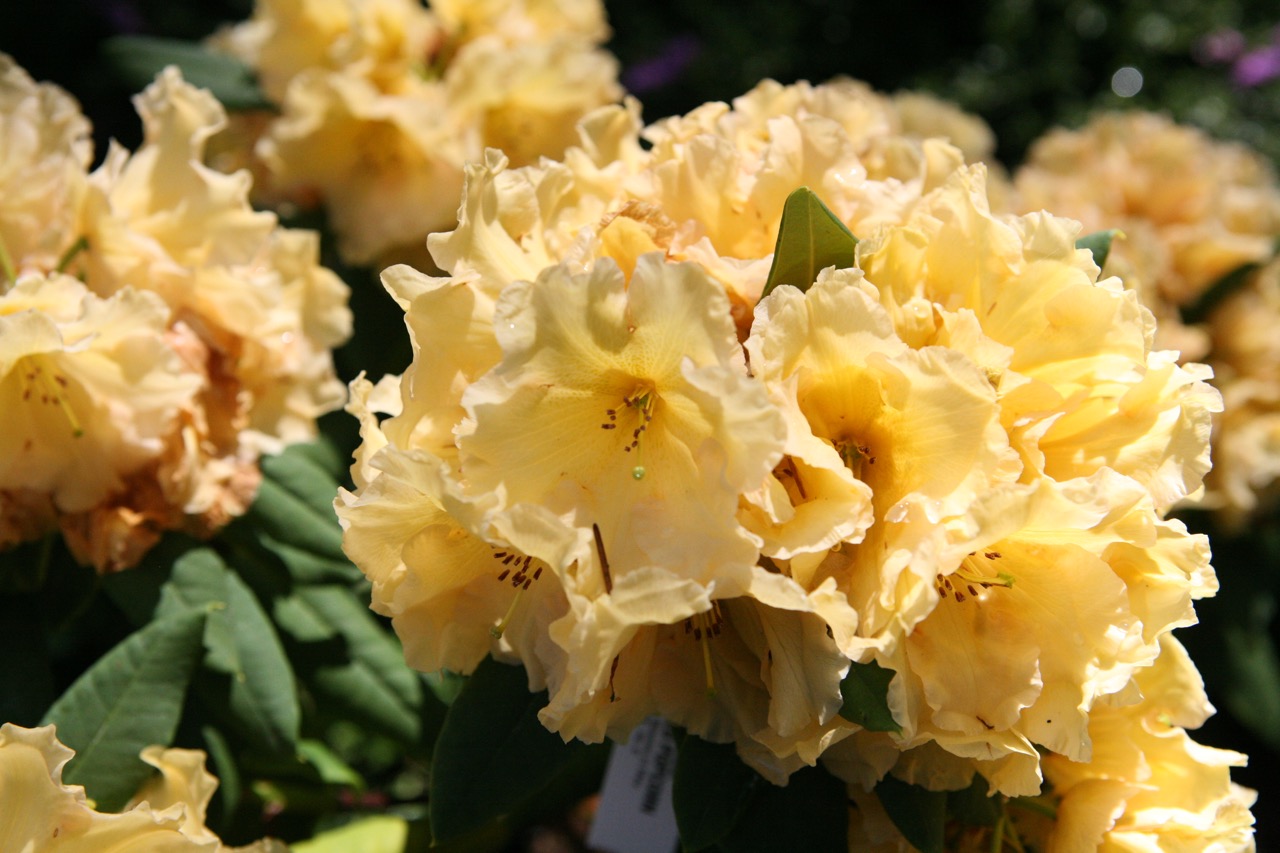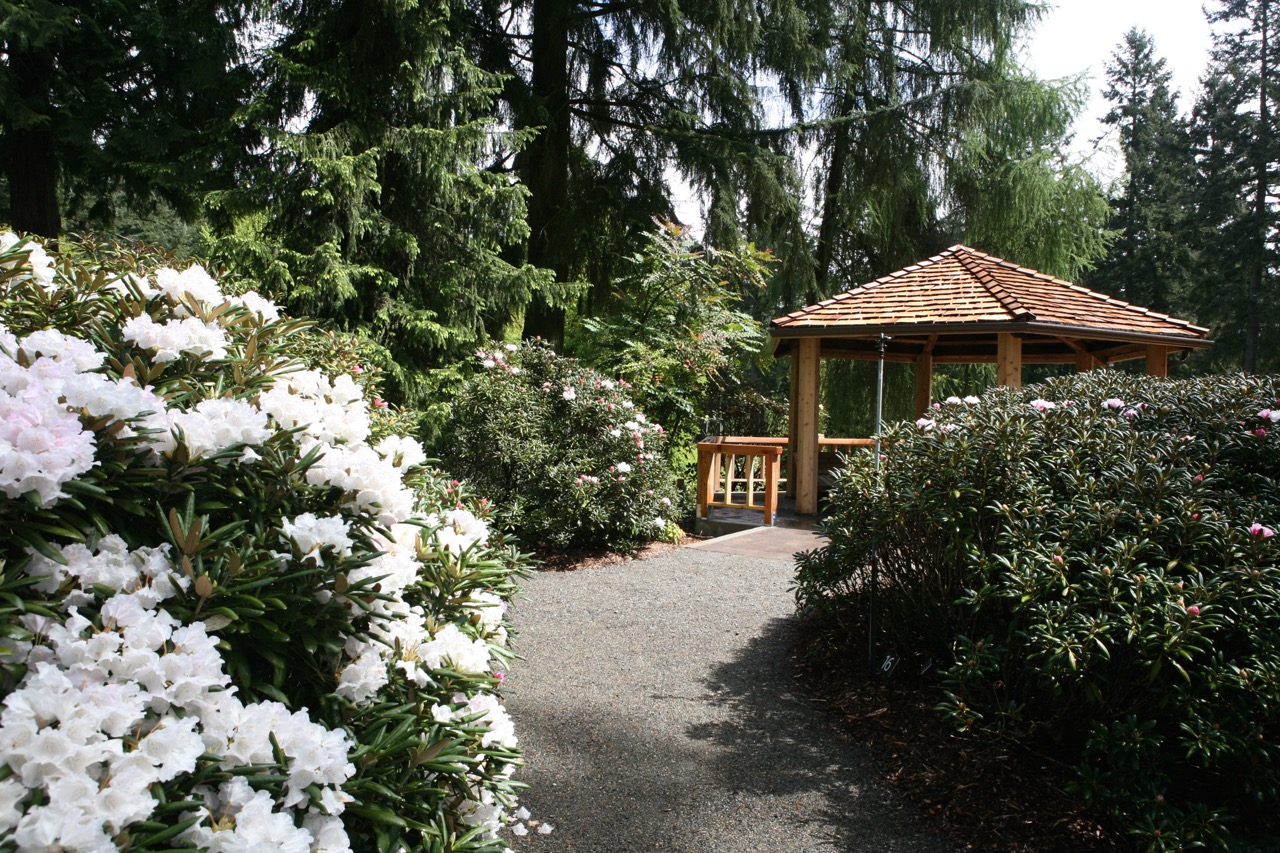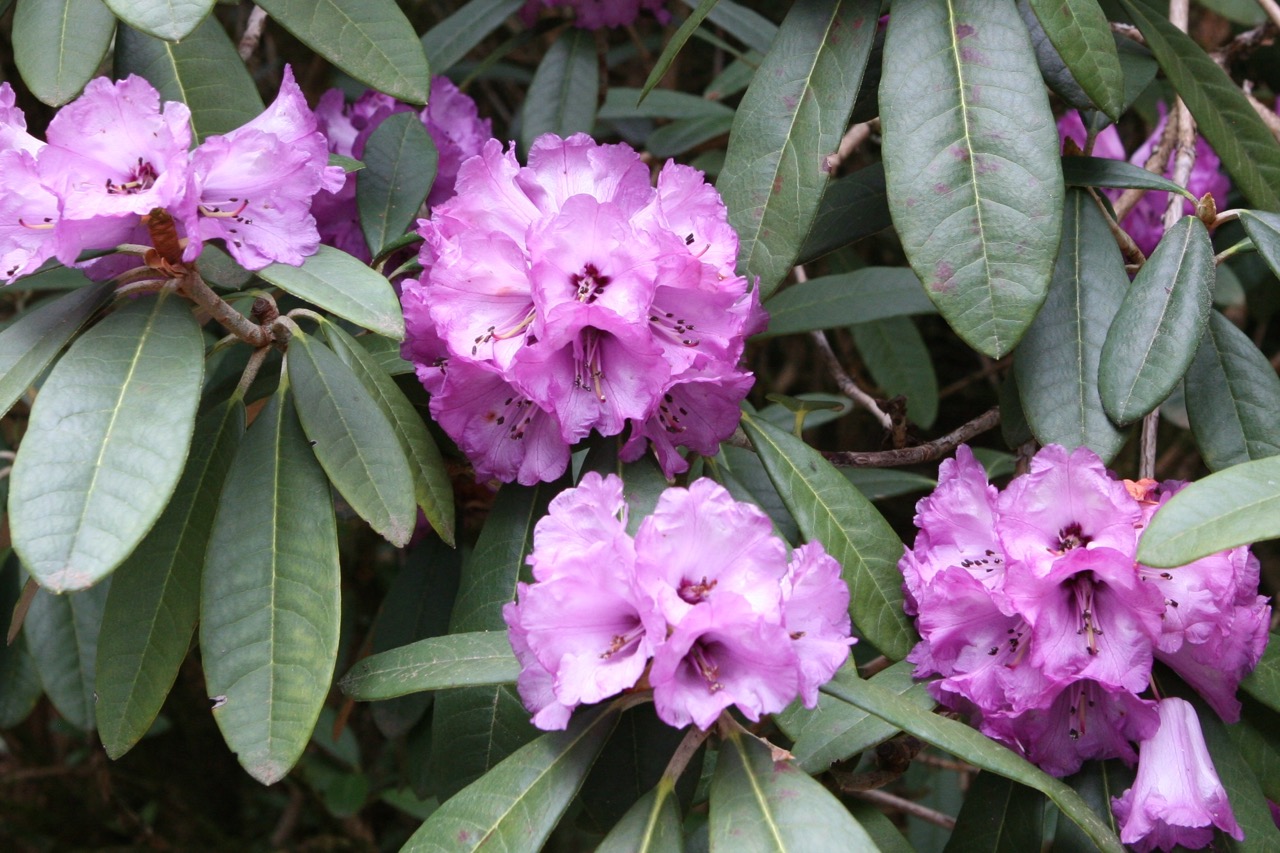It is hard not to fall in love with rhododendrons - also known as "rhodys or rhodos or rhodies." Their mostly evergreen oval leaves add lushness to woodland spaces all year long and their blossoms delight in the spring. My dad filled our rural Maryland landscape with as many varieties as he could get his hands on.
Milton Walker’s passion for rhododendron comes through in his January 1964 American Rhododendron Society report, “[I] had the great privilege this past summer of seeing the Species Collection at Windsor Great Park in England. The size and maturity of these plants was most impressive. We, here in the United States, are so used to our small and very young plants, we are not prepared for the majestic beauty that maturity brings to rhododendrons. The plants at Windsor are well spaced … often a dozen different forms, all carefully and legibly labeled with name and collector's number. To see thousands of these species plants growing superbly in a natural woodland setting was a sight never to be forgotten.”
Curving pathways lead visitors through the garden. The woodland setting and companion plantings provide a sense of how the "Rhodys" might be seen in the wild.
Soon after this report, Walker founded the Rhododendron Species Botanical Garden in the United States. His plan was to import cuttings from England to get the collection started. Although he was able to get British gardens on board, US import regulations would not allow the cuttings into the country. Flexibility, patience, and a quick change of plans meant that the cuttings arrived in Canada first, where they were grown for 2 years, and then made their way into the US: no longer cuttings from Europe, but plants from Canada. Brilliant! Interestingly the collection was moved 4 times before it finally made it to its current location on 24 acres leased from the Weyerhaeuser Company in 1974. With the sale of the Weyerhaeuser Company in 2016, the Rhody Garden’s lease is being continued by their new landlord, the Industrial Realty Group. Specimens are planted to show off their full beauty within a picturesque frame of winding paths. The garden's collection has grown to over 700 Rhododendron species, one of the largest collections in the world.
Plant tags noting native locations - India, Himalayas, China - reminded me of the great plant hunters of the 19th and 20th centuries. This was a period that brought botanists, adventurers, and business interests together.
Garden historian Toby Musgrave followed in the footsteps of Sir Joseph Hooker, the great 19th century botanist and plant hunter who was in 1847 became the first Westerner to visit the then-kingdom of Sikkim.
Captain John Champion noticed Rhododendron championae while stationed in Hong Kong (1850) and Robert Fortune found Rhododendron fortunei in Chekiang (1855). French missionaries stationed in western China, including Pere Armand David, brought back many cultivars including Rhododendron davidii (1868-1870).
In the 1920’s, Frank Kingdon-Ward and Lord Jack Cawdor discovered Rhododendron pemokoense during an expedition along the Tsangpo river gorge, the deepest on the planet. Their trip was financed by a wealthy cotton merchant and memorialized in their book Riddle Of The Tsangpo Gorges.
Milton Walker founded the Rhododendron Species Botanical Garden to preserve rhododendron like those mentioned above, as well as others from North America, Australia, and Europe. "Some ... species, such as... Rhododendron edgeworthii with its fragrant pink blossoms and the early-blooming Rhododendron barbatum with its smooth exfoliating bark, were discovered by Joseph Hooker on his ground-breaking three-year expedition to the eastern Himalayas in the late 1840s," explains Jackie Hiltz in "Beauty and diversity at Federal Way rhododendron garden."
This botanical garden’s work is particularly important given the loss of natural habitat in many parts of the world. In the US for example 20% of native rhodys are facing extinction due to housing development.
Now is a great time to visit the Rhododendron Species Botanical Garden in Federal Way, Washington. Peak bloom times run through mid-May. Check out my post on their blue poppies.
Thanks to Milton Walker!

